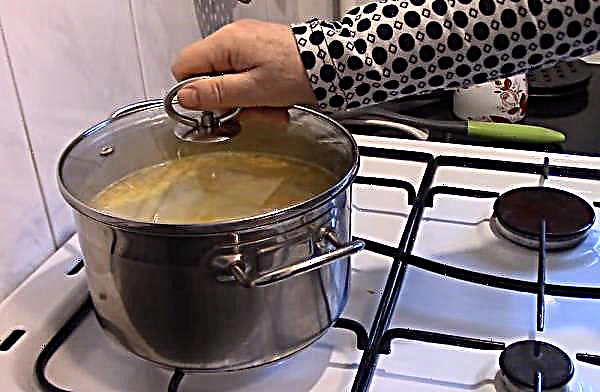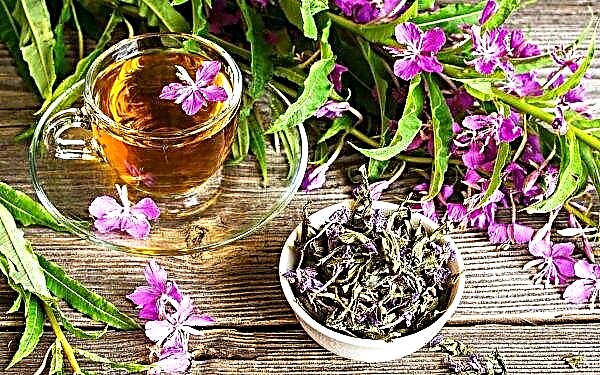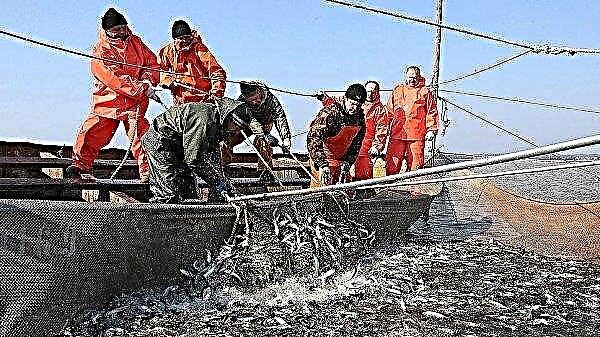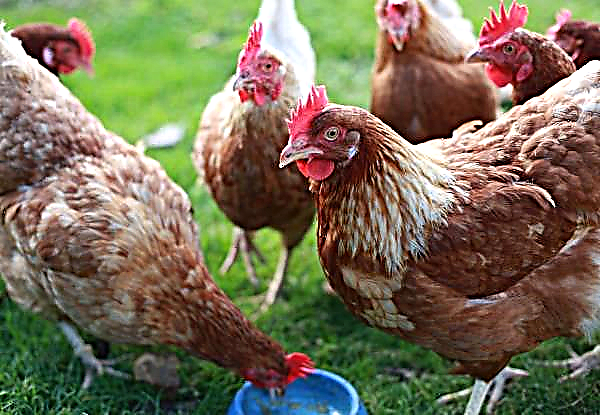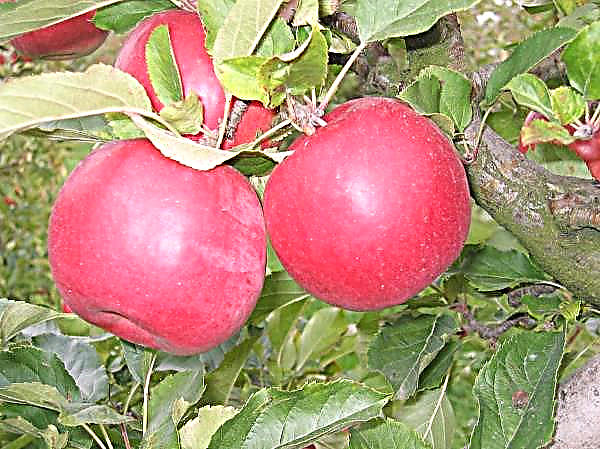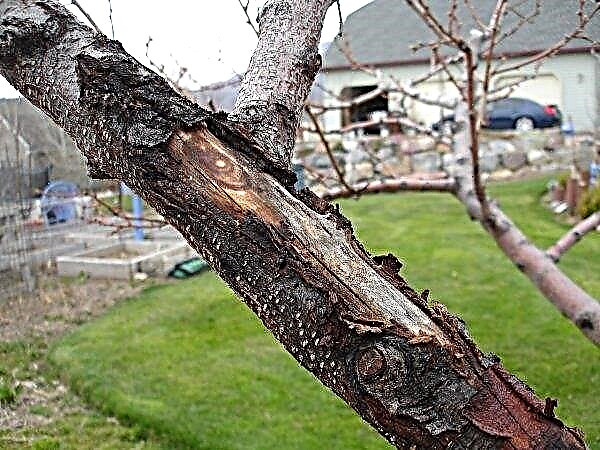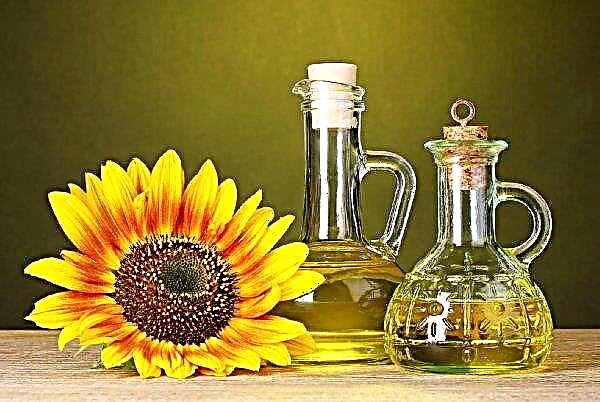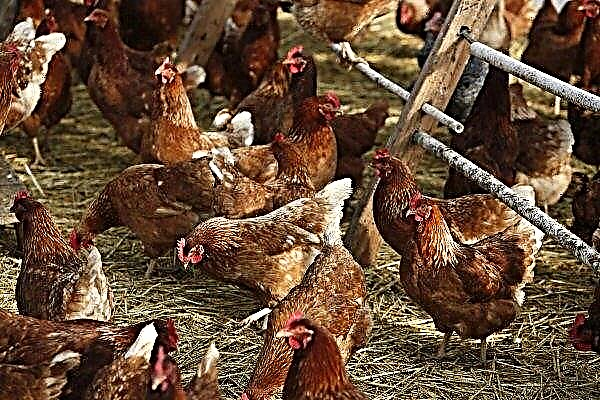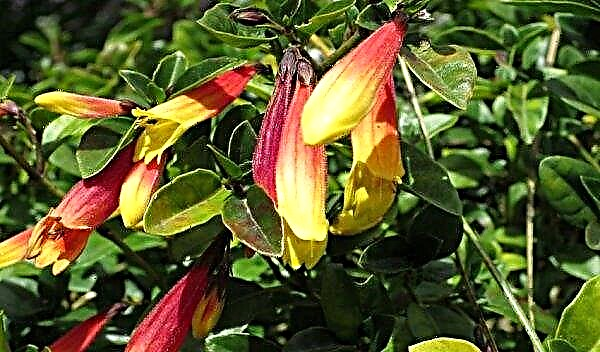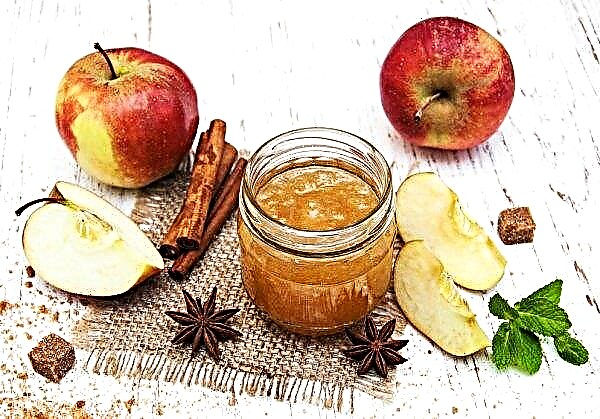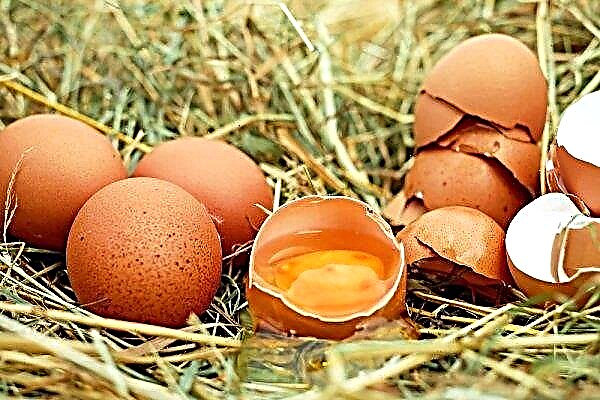Among the numerous indoor plants, there are many decorative species with unusual leaves or flowers. Hypoesthes, a guest from the hot tropics of Africa and Madagascar, to whom our material is devoted, belongs to this number.
Botanical description of the plant
Hypoesthes is an evergreen herbaceous shrub up to 60 cm high, compact and leafy. Foliage is decorative in the plant: heart-shaped or oval with a pointed tip, with carved or serrated-serrated edges.
Attractive foliage gives an unusual color:
- white or lilac freckles on a green background;
- red or pink, lilac background with a green edge and partially veined;
- white leaf with green veins;
- a bright pink center, a darker frame, along the edge a light green tone.
 Depending on the species, hypoesthes blooms in spring or summer, but continues to bloom until winter. Nondescript on the background of luxurious leaves, a pale lilac (less often red or white) flower is located in the semi-umbrella. Curved petals expose a cup of flower.
Depending on the species, hypoesthes blooms in spring or summer, but continues to bloom until winter. Nondescript on the background of luxurious leaves, a pale lilac (less often red or white) flower is located in the semi-umbrella. Curved petals expose a cup of flower.| Root system | Surface |
| Leaf shape | Ovoid, cordate |
| Leaf color | Bicolor, speckled |
| Flower shape | Tubular |
| Flower color | Lilac, red-white |
Did you know? Bioenergy argues that it is useful to keep hypoestheses in the home for people with creative professions. The flower is able to activate creativity, give inspiration and positive energy.
Main types
In total, there are about 150 species of plants, but not more than a dozen varieties and their hybrids are grown in culture.
Most popular indoor views:
- Hypoesthes leaf-spike - has dark green leaf plates, oval-elongated with uneven edges, violet spots are randomly located on the upper part. Blooms in the winter, petals of a lavender hue.
- Blood red - a branched, low (up to half a meter) bush, with large, up to 8 cm in length, oval-shaped leaves with a sharp tip. The main color of the leaf is bright red, the veins and the edge of the plate are dark green. The flowers are pale red, the pharynx is white.
- Spinous - tall species, up to a meter high, bred mainly in greenhouses or gardens. Heart-shaped, large, pubescent leaf blades of green color without inclusions. Differs in magnificent blossoming of white and violet color.
- Hypoestes Confetti - a view that combines several varieties that differ only in the color palette. Leaf plates can have spots of white, raspberry, burgundy, lilac shades.
- Splash - combines two varieties with a white and pink background, only the edging of a leaf and veins is painted green.
- Hypoesthes leaf stamen - differs in very thin structure of sheet plates, to the touch they seem paper. Color is no less interesting: the central vein is bright pink, gradually turning into a saturated lilac color, the edge of the sheet is painted in green.






House growing conditions
It is best to choose a confetti hypoesthes or mix, as it is also called: it is less moody in leaving. In addition, the collection will replenish with different colors of plants with one type of content.
Location
In the cold season, southeastern or southwestern window sills are chosen for maintenance. In the summer, it is possible to keep in the fresh air (balcony, porch), provided there is no draft. From the direct rays of the sun, the flower needs to be shaded, since succulent leaves are prone to burns.
For uniform development of the bush, the pot must be regularly turned to the light source in different directions.
Temperature
The temperature range for this plant is from +18 to +25 ° C. It is not recommended to deviate from these values: the plant may become sick, discard leaves or inflorescences. The period of rest in hypoesthesia is often absent, but it must be illuminated during the short daylight hours, extending it to 10-12 hours.
Air humidity
The optimum humidity is 60–70%. To maintain this condition, hypoesthesia is sprayed in the heat twice a day, in winter 1 time is enough. You can place the pot on a tray with moistened expanded clay. In summer, the plant can have a warm shower.
Home Care
Immediately after purchase, the plant needs to be adapted, therefore, it is transplanted into a new container after two-week quarantine.
Watering
For irrigation use warm (+ 22–25 ° C), preferably standing water. If the tap water is too hard, it can be softened at home. To do this, add wood ash in a proportion of 3 g / 1 liter of water.
The best method of watering is considered to be spraying a soil coma or irrigation from a watering can. In this case, the excess liquid from the pan must be drained. In the summer, hydration is carried out once every 2 days, in autumn and winter - 1-2 times a week. Drying of the soil is not allowed.
Top dressing
From spring to autumn, the flower is fed once every 3-4 weeks. When choosing fertilizer, preference is given to ready-made complexes for flowering ornamental plants with a large amount of potassium and a significantly lower dose of nitrogen.
Important! Potassium is necessary for hypoesthesia to bloom and brighten the color of foliage. But nitrogen, more precisely, its excess, can lead to loss of spots and a general dull appearance.
Pruning
Cardinal pruning is carried out in the spring, leaving short shoots at the surface (about 3 cm). Cropped stems are not thrown away: they can be used as planting material. During the entire growth period, pinch the bush, removing parts of the twisted shoots, knocking out of the total length and shape of the crown.
During the entire growth period, pinch the bush, removing parts of the twisted shoots, knocking out of the total length and shape of the crown.
Despite the fact that the plant is blooming, the flowers do not play any role in decorativeness: they are too pale and small, so experienced flower growers recommend removing inflorescences so that the plant does not waste energy on flowering to the detriment of the development of bright foliage.
Transfer
The transplant is carried out in the spring, the plant just bought - 2 weeks after purchase. The bush grows quickly and perfectly branches, so the procedure is carried out every 2 years.
Soil is preferable to take neutral or slightly acidic, light, nutritious, with good throughput.
Self-prepared substrate consists of such components (in a ratio of 2: 1: 1: 10):
- garden land;
- peat;
- coarse sand;
- humus.
A flower container can be purchased from plastic, light and heavy pots made of natural materials are optional. For an adult plant, the new pot should be 1.5–2 cm larger than the previous one. The shape can be any, but the size needs a wide, rather than deep capacity.
Fine gravel or polystyrene can be used as drainage.
Transplant Technique:
- A 1.5 cm layer of drainage is placed at the bottom of the pot.
- The bush is removed from an old tank by transshipment.
- The roots of the hypoesthesia are fragile, so the old earth is shaken off very carefully.
- Sprinkle drainage with a layer of soil, lay a bush, holding with your hand.
- Fill the tank with soil at the edges, slightly tamp.
- After abundant watering, the remaining liquid is drained.
- The flowerpot is placed in a warm place with diffused lighting.

Breeding
For seed propagation, planting material is purchased in a store, since flowering is rarely allowed at home. After flowering, the plant is greatly extended, which detracts from its decorative effect. More often propagate the bush by cuttings.
Cuttings
Cuttings can be carried out in spring and summer. The apical shoots that remain after the anti-aging pruning will do.
Important! A healthy stalk should have at least two nodes.
The soil mixture is prepared the same as for an adult plant. For rooting, the cuttings are planted in plastic cups, covered with a glass jar and placed in heat (+ 22–25 ° C).
After 10-14 days, the young specimen is dived into the pot, removing the seedling with a spoon, capturing part of the soil. During growth, pinch the top to stimulate the development of lateral shoots.
Seed cultivation
Sowing is carried out in early March. As a container, you can use a food-grade plastic container with a lid. The soil is made up of sand and peat in equal proportions.
Seeds before sowing are kept in any growth stimulator (Epin, Zircon) for about 12 hours. Sowing technology is as follows:
Sowing technology is as follows:
- The substrate is moistened from a spray bottle.
- Seeds are scattered on the surface with a thin layer, without deepening, slightly sprinkled with soil.
- The lid is closed and left to mature for up to 14 days.
- During this period, regular ventilation is necessary, the temperature of the content is + 13–18 ° С.
- After 2 weeks, the greenhouse is opened and dive seedlings in separate cups.
Did you know? Some African tribes use leaves of hypoesthesia instead of spinach, preparing various salads from them.
Growing difficulties
Some inaccuracies in care can lead to complications in growing the flower.
Common problems and solutions:
- The foliage dries at the tips, wrinkles and curls with a boat - dry air (possibly close proximity to heating appliances). To maintain the necessary humidity, you need to spray the space around the flower.
- Dry brown spots on leaves - sunburn. The flower must be shaded from the direct rays of the sun.
- Leaves foliage - sudden changes in temperature, lack of watering. It is necessary to observe the temperature regime, watering is carried out until the soil is completely moistened (without swamping). Water for irrigation should not be cold. Eliminate possible drafts.
- Leaf blades lose color impregnations, acquiring a plain green color - excess nitrogen. Bushes are actively developing even without fertilizing with nitrogen, the substance is added in minimal quantities. Decorative support fertilizers with potassium content.
- The bush is pulled to one side. - uneven lighting. The pot must be regularly turned in different directions to the light source.
- The bush is pulled up - neglect of pinching.
- Turns yellow and withered foliage - excess moisture. Moisten the soil as its top layer dries, drain the remaining liquid from the pallets.

Disease
Hypoesthes is one of the few indoor plants that have strong immunity. Due to non-compliance with the maintenance regime, the development of root rot is possible. In this case, the bush must be transplanted, with a complete replacement of the soil. In the future, the frequency of watering should be observed.
Pests
In the warm period of the year, when the street is kept or aired, the plant can be attacked by pests, the most common of which are:
- aphid;
- whitefly;
- mealybug;
- spider mite.
Prevention from whitefly butterflies will be sticky tapes suspended near the plant. You can fight them with the help of insecticides ("Actara", "Decis") or garlic infusion (if there are few insects). For infusion, take a large head of garlic per liter of water, insist for several days. For use, 200 ml of infusion is diluted with water in an amount of 400 ml. When infected with aphids, mealybugs or spider mites, the flower is washed under a warm shower. Then a soap solution is removed from the leaves of the remaining parasites. After it is treated with any insecticide (Actellik, Bazudin).
When infected with aphids, mealybugs or spider mites, the flower is washed under a warm shower. Then a soap solution is removed from the leaves of the remaining parasites. After it is treated with any insecticide (Actellik, Bazudin).
All that is necessary for the successful cultivation of a tropical flower is compliance with the microclimate and the rules of care. Unusually bright foliage of hypoesthesia will become an additional decoration of the interior, painting your house with bright colors.

